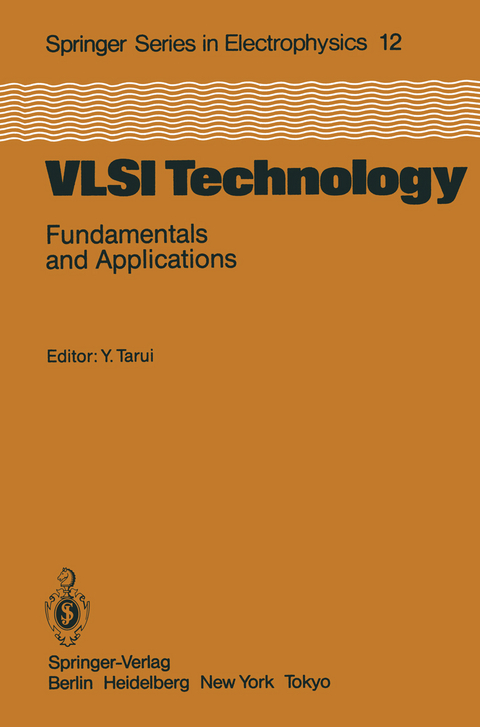
VLSI Technology
Springer Berlin (Verlag)
978-3-642-69194-2 (ISBN)
1. lntroduction.- 1.1 The Significance of Semiconductor Integrated Circuits.- 1.2 Prospects of High-Density Integration.- 1.3 Device Dimensions and Density of Integration.- 1.4 Outline of the Microfabrication Technology.- 2. Electron Beam Lithography.- 2.1 Background.- 2.2 Components for Electron-Beam Lithography.- 2.3 Software for Electron-Beam Lithography.- 2.4 Wafer and Writing Systems.- 3. Pattern Replication Technology.- 3.1 UV Replication Technologies.- 3.2 Deep-UV Projection System.- 3.3 X-Ray Lithography.- 3.4 Electron-Beam Projection.- 3.5 Radiation-Sensitive Resist for Microfabrication.- 4. Mask Inspection Technology.- 4.1 Principles of Mask Inspection.- 4.2 Mask Inspection Systems.- 5. Crystal Technology.- 5.1 Overview.- 5.2 Impurities in Si Crystals.- 5.3 Wafer Bow and Warpage.- 5.4 Thermally Induced Microdefects.- 5.5 Epitaxial Growth.- 6. Process Technology.- 6.1 Dry Etching.- 6.2 Beam Annealing.- 6.3 Thin-Film Deposition Techniques.- 6.4 Metallization.- 6.5 Evaluation of Gate Oxide Film.- 6.6 Super Clean Environment.- 7. Fundamentals of Test and Evaluation.- 7.1 Testing and Evaluation of the Device Design.- 7.2 Device Analysis and Evaluation.- 7.3 Device Testing.- 8. Basic Device Technology.- 8.1 Background.- 8.2 Limitations for Miniaturization.- 8.3 Prediction of Device Performance Advancements.- 8.4 Examples of Device Structure.- 8.5 Device Structure.- References.
| Erscheint lt. Verlag | 10.12.2011 |
|---|---|
| Reihe/Serie | Springer Series in Electronics and Photonics |
| Zusatzinfo | XIV, 450 p. |
| Verlagsort | Berlin |
| Sprache | englisch |
| Maße | 155 x 235 mm |
| Gewicht | 702 g |
| Themenwelt | Informatik ► Theorie / Studium ► Künstliche Intelligenz / Robotik |
| Technik ► Elektrotechnik / Energietechnik | |
| Schlagworte | Circuit • Development • Integrated circuit • LSI • semiconductor • Transistor • VLSI |
| ISBN-10 | 3-642-69194-3 / 3642691943 |
| ISBN-13 | 978-3-642-69194-2 / 9783642691942 |
| Zustand | Neuware |
| Haben Sie eine Frage zum Produkt? |
aus dem Bereich


